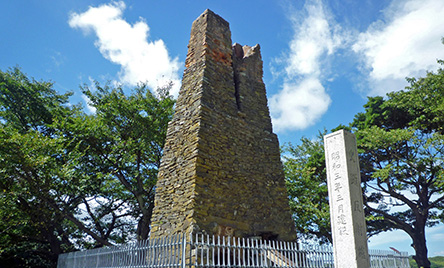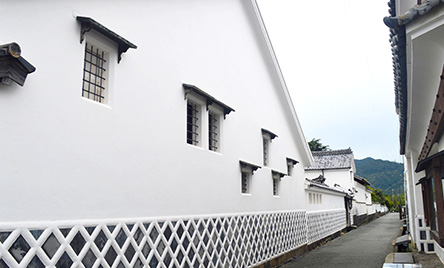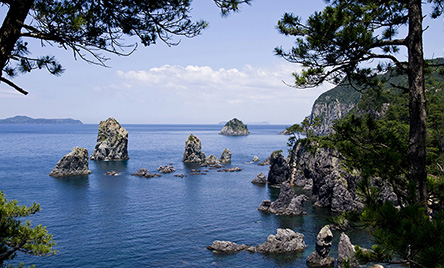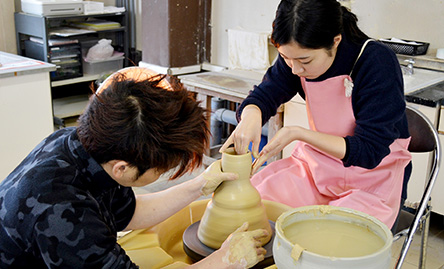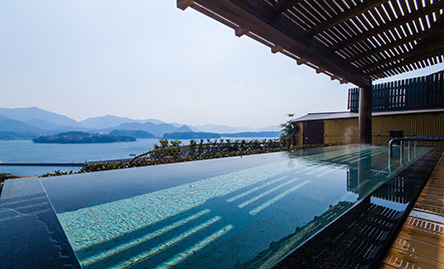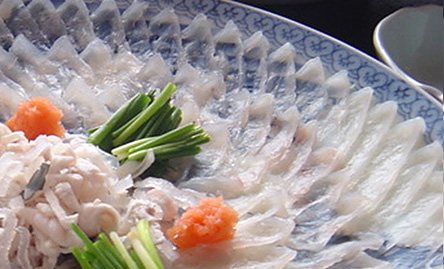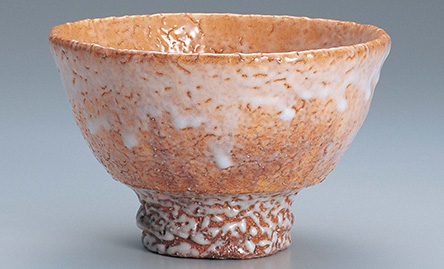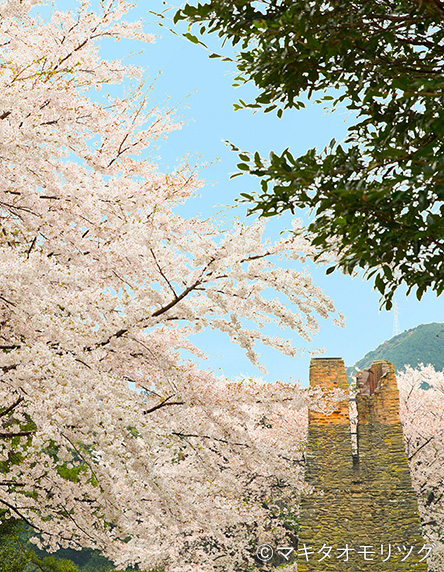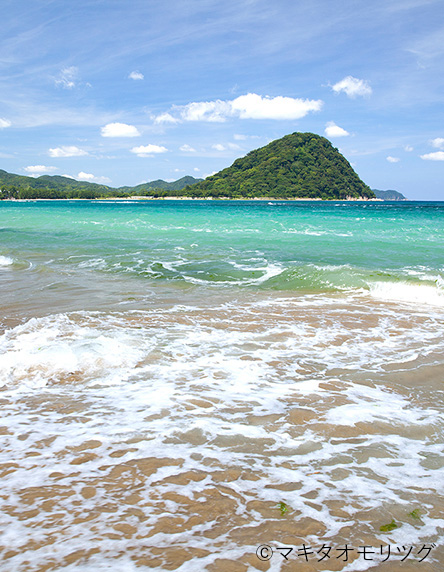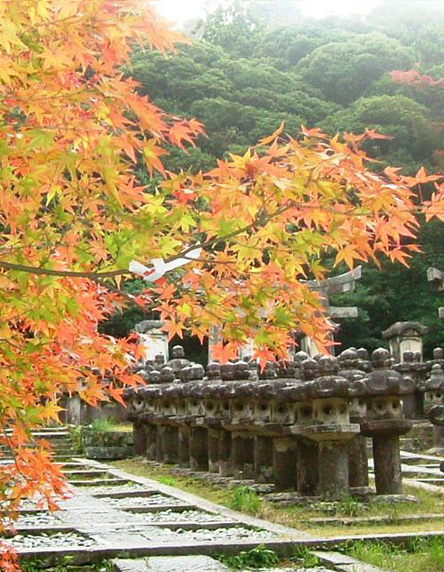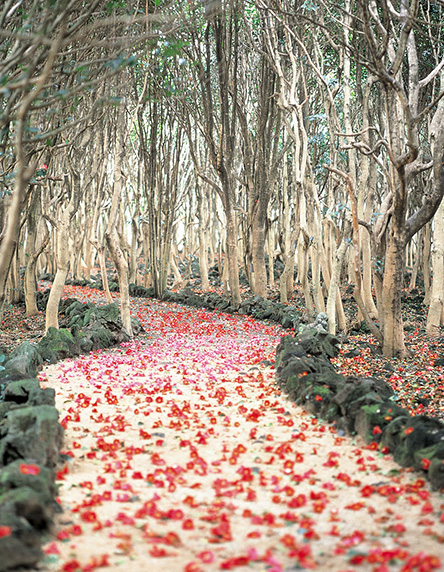The Former Koike Family Warehouse was built near the end of the Edo period (1603–1867) and is thought to be over 200 years old. Since 2010, it has been repurposed to hold the festival floats and other items used in the Sumiyoshi Shrine summer festival. Panels explaining the architectural features of the historical buildings in Hamasaki hang on its walls.
The warehouse’s eastern wall is tiled with black ceramic squares. The plaster in the seams between the tiles is mounded, creating a distinctive grid pattern called nameko kabe, or “sea-cucumber wall” because of the seams’ resemblance to the rounded body of a sea cucumber. The lacquered pine wood floor of the warehouse is laid on a base of hardened sand to accommodate heavy freight brought in from the port.
Sumiyoshi Shrine summer festival began in 1665 and continues to be held every summer. At the heart of the festival is the Ofuna-dashi, a large boat-shaped float that is pulled through the streets by the festival float-bearers. Two other floats are hauled alongside: one, the Sarutahiko-dashi, bears a giant, red-nosed goblin called a tengu, and the latter, Goshinbei-dashi, carries sacred Shinto objects, including votive sake and cleyera japonica.
Also on display are two ornate dolls called hijiri. These special attractions for the crowd are set on portable wooden “stages” that are transported through the festival on the backs of designated carriers. Once, there were 50 or more of these stages, but now only three dolls remain. Also on display are two huge lanterns called nonta chōchin that are paraded through the streets during the festival. The lanterns used today are stored elsewhere.
(This English-language text was created by the Japan Tourism Agency. )
Basic info
| Address | Hamasaki, Hagi, Yamaguchi |
|---|---|
| Open | Free to view only the exterior *For internal tours, please contact the former Yamamura family residence (phone: 0838-22-0133) |
| Holiday | Every Wednesday, Obon Holidays, year-end and New Year holidays |
